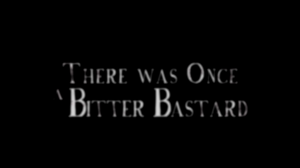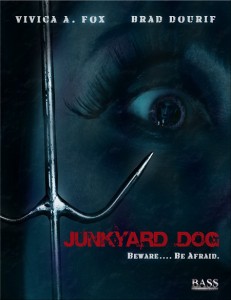
Jeff, Who Lives at Home

Plot: Jeff (Jason Segel) is a thirty year-old slacker who lives in his mother’s (Susan Sarandon) basement. When running an errand, he bumps into his brother, Pat (Ed Helms), who is having the worst day of his life. His marriage to Linda (Judy Greer) is in shambles and he believes she’s cheating on him. The two are polar opposites, but connect when push comes to shove.
Review: “Jeff, Who Lives at Home” is like flat soda. It has all the ingredients to be delicious. It has a stellar cast, solid directors (Jay & Mark Duplass, who also wrote the screenplay) and a simple plot that leaves a lot open for content. Yet, it never seems to click. It feels like it’s on autopilot or, to tie it into the flat soda relation, has been sitting out for too long.
The main issue is that everything seems to simply happen (at an alarmingly fast pace). There’s no room for character growth or story progression. The actors give it their best to breathe life into their characters, but they feel like hollow caricatures. Jeff is the typical stoner loser; Pat is the stressed out workaholic; Linda is the neglected wife; Sharon (Sarandon) is the lonely mother. No matter how hard the actors tried, they couldn’t break the bland mold that had encompassed them.
As for the screenplay, it just feels there. All of the events happen not to help the characters grow, but only to move the plot along. There are fleeting moments of sincerity and wit, but they don’t last long. They’re simply a reminder of what could have been. The Duplass brothers have written quirky dialogue so well in the past that I can’t quite grasp what went wrong here. Maybe it’s because the film didn’t have the wicked edge that their previous effort, “Cyrus”, did. The only aspect of the film that has any edge to it is their mother having a secret admirer, which comes across as creepy more than it does cute.
I struggled to find myself caring about “Jeff, Who Lives at Home”. Especially during the finale. I knew I should have been feeling sympathy, but I couldn’t quite muster anything above apathy. Anytime I started to get hooked, I remember how I felt cheated by the film’s earlier events and go back to feeling stoic.
Final Rating: C
There Was Once a Bitter Bastard

Plot: Amy Lamm (Mariana Prestigiacomo) is shooting a promo video for Dr. Gavin H. Grant’s (Tristan Newcomb) latest software, M.A.T.I.S.S.E. He believes it can produce original art better than any human artist. However, his disdain for artists and human population in general begins to seep through, chronicling a man on edge’s downfall.
Review: “There Was Once a Bitter Bastard” is Tristan Newcomb’s most accessible film. He’s known for making outlandish films, the type that Hollywood won’t make. This has been hit and miss for me, but I’ve always respected his drive and desire. His distinct style is still present in this film, but it’s attached to a more straightforward story.
Though there will be people who will have the film simply go over their head (such will always be the case), I feel those who couldn’t grow to appreciate Tristan’s past films will have an easier time swallowing this one. It’s more character driven than it is visually aesthetic. Nobody should have a hard time following it.
Tristan Newcomb once again stars as the main human character (can’t technically call him a protagonist), though this is the first time he’s had the bulk of the screen time. At least, from what I’ve seen. The other two previous efforts of his that I reviewed (“Only Interstellar Pinball Lives Forever” and “Summer of the Chew Toy Soul”) focused primarily on the puppet Dobo. He was nothing more than a supportive character. Here, he’s the main focus and he does a swell job. I believe he restricted himself to smaller roles in the past to get more comfortable with his acting. Any jitters or inconsistencies he has he worked into Gavin’s character quite brilliantly.
The camera focuses on him almost the entire time, playing like a found footage film. That’s not a hook but a necessity this time around, one Newcomb uses to his advantage. The story plays out that Amy leaked all of the footage she had captured of him, showing him as a depressed sociopath instead of an intelligent designer. Tristan has always focused on the emotional downfall of humans (or a puppet) and shows no signs of struggle here.
That’s not to say he doesn’t struggle here and there. The scenes where Grant snaps on a group of art students during a speech are effective, but drag on for too long. They start out fine, but tend to play out as filler to pad the running time. He also reuses some of the same music (by him and Tsuyoshi Oyama) from his previous features and it doesn’t quite fit here. It also reminded me of his past efforts instead of allowing the film to stand on it’s own two feet.
Tristan’s able to bring everything back around for the final act. I was afraid the story had reached it’s limit, but he found an intriguing way to hook the viewer back in. He may have faltered in the middle, but he certainly landed the finish. Considering that’s one of the most important aspects of a film, I commend him!
Despite this not being my favorite of his films (that would be “Summer of the Chew Toy Soul”), it’s the one I’d recommend the most. It’s accessible for the general populace and, if it impresses them, they may be more willing to accept the intricacies of his other films.
Final Rating: B
Under the Boardwalk: The Monopoly Story

Plot: Zachary Levi narrates Kevin Tostado’s documentary on the board game Monopoly. It follows the creation and history of the game, it’s cultural impact and the annual World Tournament. We’re introduced to various competitors and learn their passion for the classic game.
Review: If the idea of a documentary on Monopoly makes you laugh, there’s nothing I can write to make you want to see this film. There’s no prodigious revelation about it’s history or unexpected hook to draw outsiders in. That’s not to say you have to be a hardcore fanatic to enjoy the film. You just need to have some vested interest in the project going in for it to win you over.
I myself was strangely intrigued by the idea. I’ve never been a huge fan of Monopoly, but have played my fair share of games (like everybody). I shouldn’t be too surprised that the film quickly grabbed my attention, as I’ve watched documentaries about pinball machines and arcades in the past few months. It’s possible that the idea of an entertainment form that doesn’t seemingly lend itself to a feature length documentary is a piquing challenge for me.
Just like the pinball documentary (“Special When Lit: A Pinball Documentary”), it doesn’t quite sustain itself for the near ninety minute run time. By the hour mark, it starts to run out of steam. Oddly enough, Tostado follows the same pattern that Brett Sullivan did with his documentary and brings the viewer back in with a World Championship bout at the last second. Even the way he organizes the clips and interviews is similar.
The one advantage “Special When Lit” has is that it’s back story is surprisingly engrossing. Outside of Monopoly’s use in World War II, there’s nothing shocking or groundbreaking about it’s inception or history. Pinball machines for banned for years in the United States (due to apparent promotion of gambling), which added an extra layer of intrigue. Sure, Monopoly was banned in certain countries for awhile as well, but that was more understandable given the game’s content (entrepreneurship).
I’m not trying to come down too hard on “Under the Boardwalk”. It’s a sufficient documentary that delivers on expectations. It just seems limited to an hour then it does a near ninety minute run time. I found myself growing bored with it as time went on, much like the board game itself. Even so, I’d recommend checking it out if you have any vested in it. At the very least, it’s a moderately enjoyable way to kill an hour and a half.
Final Rating: B-
American Animal

Plot: Jimmy (Matt D’Elia) has two causes for concern in his life. He is slowly dying and he feels his best friend, James (Brendan Fletcher), is betraying him by getting a job. Not being able to cope, he stows away in his apartment and goes stir crazy. This disrupts not only James, but his girlfriend, Angela (Mircea Monroe) and her best friend, Angela (Angela Sarafyan).
Review: Matt D’Elia put the weight of the world on his shoulders. He took the daunting task of writing, producing, directing and starring in “American Animal”. Already a tough job for anybody. Add in the unorthodox and completely bonkers mode this film works on and he basically sets himself up for failure.
Yet, he somehow avoids failure and crafts a maniacally enthralling dramedy that never ceases to be ambrosial! He may let the film, and himself, drift from time to time, but that’s a risk he needed to take. I found myself wondering if having someone else direct would have been a good option. That way someone could have told him when to hold back. The problem with that is holding back just a little may have crippled what he had built up.
Matt D’Elia is a fearless man. He spends most of the film in pink underwear, leading up to one scene where he waves his genitalia around with unabashed glee. His performance of Jimmy can almost be misconstrued as that of a serial killer. He has a short fuse and can go off at any second. Instead of violent outbursts, he creates his own language and carelessly (and almost ignorantly innocently) insults those around him. He drives everybody nuts and draws every situation back to him. By all accounts, he should be a detestable human being. Yet, I couldn’t help but wonder what he would do next.
D’Elia walks a fine line of turning off the viewer, but does tone it down occasionally to allow the audience to breathe. Brendan Fletcher helps a ton as being the amiable straight man, as do Mircea Monroe and Angela Sarafyan as the two Angelas. Without them, it’s quite possible this film would have fallen flat on it’s face. Instead, it continued to captivate me and glue me to the screen.
Even when it’s aimless (mainly in the first half hour), I found myself attached to the happenings on screen. Most would relate this to a car accident, in that knowing something is terrible, but not being able to look away. The flaw I find with that theory is that this isn’t a horrible tragedy. It’s not a masterpiece, but it’s a dementedly delightful piece of art!
Final Rating: B+
Junkyard Dog

Plot: A serial rapist (Innis Casey) kidnaps a young woman named Audra (Galadriel Stineman). Samantha Deatherage (Vivica A. Fox) is assigned to the case and Sheriff Holk (Brad Dourif) assists her in catching the suspect.
Review: Going into “Junkyard Dog”, I was actually hoping that Brad Dourif wouldn’t be playing the serial rapist. Not that he would have been bad for the role. He could play it in his sleep. It’s just that I didn’t want to see him typecasted into the role once again. He’s proven in films such as “Body Parts” and Rob Zombie’s “Halloween” films that he can be just as effective as a nice guy.
Seeing he was playing the town sheriff soothed my soul. Well, briefly. Once I was introduced to the serial rapist, I was clamoring for Dourif to be typecasted once again. Innis Casey plays the part too comically, taking away from any tension that writer/director Kim Bass had developed (which wasn’t much to begin with). He mugs for the camera way too often and gives goofy facial expressions that you’d expect from Robin Williams. Any time he builds up menace, he either sports a silly face or blurts out his lines in a farcical fashion.
Vivica A. Fox doesn’t do much better. She plays her role with one emotion; sass. She walks around town looking down on people and talking like a low-rent sitcom character. Even when she’s in danger, she acts sassy. By this point, I blame Kim Bass for not stepping in and putting a stop to her embarrassing performance. Also, on a side note, her hair is always perfectly straight and smooth. Even when rummaging around in a junkyard and getting into fights. Simply laughable.
If there’s any positives to be found (and there’s not much), it’s that the film is high on atmosphere. Bass uses the junkyard setting well and creates a creepy, claustrophobic prison Audra to be stored in. It’s reminiscent of a padded room you’d find at a mental ward, except it has a bed and a shower (which has a camera planted in it so the serial rapist can spy on her). She also gets a decent performance out of Stineman, who took a thankless role and infused it with some sympathy. Not that it’s hard to feel for a person in such a situation, mind you.
There are only two reasons I’d even recommend “Junkyard Dog” to someone. The first is for Brad Dourif. He only shows up for five minutes, but his presence is always a welcome treat. The other reason would be the junkyard setting. Taking both of those, I can easily point you in the direction of better Brad Dourif films (“Child’s Play”, “One Flew Over the Cuckoo’s Nest”, “Exorcist III”, etc.) and even a better horror film set in a junkyard (“Wreckage”). In closing, there really is no reason to see this film.
Final Rating: C-
